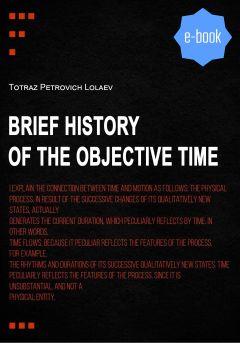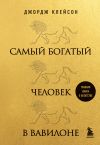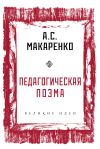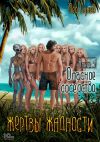Текст книги "Brief History of the Objective Time"

Автор книги: Totraz Lolaev
Жанр: Философия, Наука и Образование
Возрастные ограничения: +16
сообщить о неприемлемом содержимом
Текущая страница: 1 (всего у книги 3 страниц) [доступный отрывок для чтения: 1 страниц]
Totraz Petrovich Lolaev
Brief History of the Objective Time
Introduction
The objectivity of time is the most important and the least studied issue concerning the problem of time. In other words, it regards to the existence or non – existence of time in the objective reality.
In this regard, this article justifies the existence of the objective time in nature theoretically and experimentally.
We begin the consideration of the objectivity of time by looking into the contemporary body of literature.
According to the outstanding American theoretical physicist Lee Smolin, the majority of scientists believe that time is an illusion.
Both the great theoretical physicist A. Einstein and the famous mathematician G. Minkowski considered time a fiction.
The American scientist N. Lippincot notes, “Everything – cognitive abilities, logical formulas, and scientific methods – becomes impotent facing the mystery of time. Time is something inconceivable… the thinkers of all ages were unable to understand the great mystery of time. There is no real solution to this problem”[1]1
Lippincott H. H. Eternal Life. – “The Personalist” (Los Angeles), 1960, vol. 41, N 1, p. 39–40.
[Закрыть].
According to the Russian specialist in the issue of time V. N. Zima, the question “what is the objective time?” remains unresolved in philosophy and science[2]2
Zima V. N. The problem of objectivity of time in philosophy. M.: Prometheus, 2019.
[Закрыть].
The emergence and existence of the objective real, functional time in nature
All the concepts of time, including those of classical physics and the theory of relativity, are commonly known to be postulated and created by human mind. There is nothing corresponding to them in nature. Besides, those concepts interpret time in different ways. In our opinion, there is the only time in nature, it is the objective and real, functional time.
In this regard, this article studies the essence of the objective and real, that is, in author’s terms, functional time, which emerges and exists in nature and is not determined by a person’s consciousness.
According to our functional concept of time, a successive change in the whole new states of every tangible object and process (every object – process) determines a current duration, with that of the objective and real, functional time being its specific reflection. [3]
In other words, every specific object or process determines its own time, in which it exists. The fact is that the successive qualitative changes in a process inevitably result in a certain current duration, with that of the objective and real, functional time being its specific reflection.
It follows that time is the result of the functioning process. Consequently, time is a function of the process. Thus, time is not a universal form of matter, but a function of specific tangible objects and processes. [4]
The movement as a simple displacement does not determine the objective and real, functional time. The motion determines the emergence of time only in the observer’s mind, which makes it subjective.
Time emerges with objects and ends with the embodiment of their physical essence into subsequent objects. Object and time are inseparably associated. However, object has a physical essence and, in this regard, is a primary notion. While time is non – substantial (meaning it is neither a thing, nor a field, nor a special temporary substance). Therefore it is a secondary and derivative notion.
Since the functional time is formed by real objects having physical essence, it has a physical meaning.
Even Aristotle considered time following movement and in connection with it. In his opinion, nature is the origin of movement, and it is followed by time. [5]
Aristotle fairly pointed out both the objectivity of time and its non – substantialness stating that “time is not a movement, but it does not exist without the latter”. [6]
However, it was A. Einstein who recognized the non – substantialness of time in physical theory. He rejected the Newton’s substantial time and proposed the relational concept that sees time as non – substantial and not a physical essence.
G. Hegel also linked time with objects and processes. He wrote, “Things disappear not because they exist in time, but because they are temporary. Consequently, the process of actual things constitute time”. [5]
G. Hegel fairly asserted, “Everything is said to emerge and become in time… but it is not in time where everything emerges and becomes, rather time itself is emergence and becoming”. [6]
According to G. Leibniz, “time without things is only a perfect potentiality”. [7]
However, Hegel, like some other researchers who anticipated the concept of the objective and real, functional time (including Aristotle, Augustine, Leibniz, Bergson, Vernadsky, Einstein, etc.), did not completely reveal the mechanism of the connection between time and motion.
According to the functional concept, time is determined by all objects of micro-, macro– and megaworld.
Since the time is determined by specific objects, processes, it is always proper.
The existence of the objective and real, functional time can be illustrated by any visual physical process.
For instance, when a person observes a drop of ink falling into a glass of pure water, the process of merging causes a time – related perception in a person’s mind.
However, the process of merging the drop of ink and the water is successive qualitative changes that determine the objective and real, functional time. Moreover, in the first case is about the subjective time that only exists in the observer’s consciousness, while the second case regards to the objective and real, functional time that exists in nature.
In this example, the proper functional time emerges in a real experiment and exists independently of a person’s consciousness, while the process proceeds as such. In this regard, a current duration emerges regardless of the observer. Thus, it is nature that makes a specific physical process time – related and a subject that creates time perception for motion.
It follows that an object in motion can have time – related properties only from the observer’s perspective. The functional time results from a sequential change in whole new states of any object (both in motion and at rest).
In addition, if one observes ice turning into water, the observer perceives this process through the subjective flow of time.
However, what really is happening is the transition from one qualitative state into another subsequent one, which determines the emergence of the objective and real, functional time.
The objective existence of the functional time can be verified even if real processes are observed indirectly, i. e. through a microscope.
Let us refer to one more example. It also justifies that every object determines its proper objective and real, functional time. It is known that all medicines expire within certain timeframe of 2, 3, 4 years, etc. (the form it is stated in itself deduces that every object has its proper time, in which it exists, otherwise it would be impossible to determine the expiry date of each specific medicine).
When a medicine expires, it loses its medical properties. In other words, medicines exist until it expires. In case of pills, for example, when they expire, they stop being a medicine and start determining their proper time as a physical objects.
It should also be noted that the functional time results from motion as a reason for becoming. The becoming should be understood as a substantial change associated with the emergence of something qualitatively new as well as the emergence and disappearance of objects and their states, along with their transformation into other objects and their states. The becoming that makes something that has not existed become existing.
The objective and real time is called functional due to the very existence of time and all its properties depend on successive qualitative changes in specific physical objects resulting from the realization of their potentialities and their interaction with the environment.
Thus, the temporal rhythm and current durations of successively changing states of an object or a process depend on those of the successive whole new changes in the physical objects or the process that determine them.
Since time as it is does not exist, beyond physical objects or processes that disappeared upon the embodiment of their physical potentiality in subsequent objects, their proper time is deprived of the physical meaning.
For being non – substantial, time must emerge with specific physical objects or processes before it can exist. Given that the functional time is determined by the period between the emergence of real physical objects until they disappear (upon the embodiment of their physical essence into other subsequent objects). Then, as already mentioned, new subsequent physical objects or processes determine their proper time in which they exist due to the non – substantialness of time.
The objective and real, functional time is determined by all objects or processes in nature, from an elementary particle to the cycles of expansion and compression of the Universe, if it switches back, since in this case the cycles of the Universe emerge and terminates.
Even if the Universe, that embraces all the objectively existing world, switches back, it does not determine time, since time is always finite, while, according to all scientific and practical data, the Universe is uncreated and indestructible. In this regard, the concept of time is inapplicable.
Alternating days and nights cannot be considered the functional time, since they are a consequence of the mechanical rotation of the Earth.
Alternating years cannot be considered the functional time either, since a year is the result of a complete rotation of the Earth around the Sun, that is, the result of a simple displacement.
Days, nights and years are the subjective time, since they emerge and exist only in the consciousness of a person.
There are a lot of micro and macro processes occurring in any object as a result of the realization of its potentialities and its interaction with the environment. However, the time of an object does not represent the totality of the times emerged at various levels of the matter’s structural organization. The proper time of an object is determined by a complex of qualitatively new changes occurring in the single whole.
A human being, who as any other object determines their own time, can illustrate the external manifestation of changes in a single whole. In this case, there is childhood, adolescence, youth, etc.
The term “proper time” is also known to be used in the theory of relativity. Through the lens of this theory, proper time is measured with a “good clock” associated with a body in motion. While the proper functional time could be measured with a “perfect clock” capable of accurately repeating the rhythm and duration of successive changes in qualitatively new states of an object or a process. In practice, though, the functional time can be measured with an ordinary clock with the account of the specific process course, that is the rhythm and the current durations determined by its successively changing qualitatively new states.
The proper time of the theory of relativity emerges only in case of an intellectual experiment. For this reason, it is the subjective time. If the observer is removed from the intellectual experiment, the temporal relationship will no longer emerge, since the postulated time, imagined by a person, emerges only in their consciousness. If there is no one observing the motion of a body, an object, there will be no association with a “good clock” that would measure the proper time.
The proper functional time emerge in the objective reality independently of a person's consciousness. The current duration emerge and exists regardless of the observer. Since there is no perfect clock that can accurately repeat the rhythm and the durations formed by the successively changing states of this process in the nature, as already mentioned, it can be measured with an ordinary clock with the account of the specific process course, that is the rhythm and the current durations determined by its successively changing qualitatively new states.
Thus, the time in the theory of relativity emerges and exists only in a person’s consciousness. The time of the functional concept emerges and exists in the nature without an observer, since it is determined by real objects and processes.
According to Yu. A. Romanov and V. A. Golichenkov, one of the fundamental properties of biological systems is their spatiotemporal organization. Its study is the most important task of contemporary theoretical and integrative biology. However, despite the interest in the spatiotemporal organization of biological systems and its paramount importance, this problem has not yet been properly reflected in research. [8]
It seems to be substantiated by objective reasons, rather than subjective ones. First of all, it is because science has been handling only postulated human – created time that reflects the objective and real, functional time, the time of the nature, in an inadequate way.
The opportune evidence for the above said is the formation of the time reflex in mollusk. “The experiment is the following: a mollusk is shocked with a weak current every five minutes. After the shock, it hides in its shell for a short time, and then continues moving. After the cessation of shocks, mollusk continues to hide in the shell every five minutes exactly. This indicates that it has acquired a time – reference system”. [9]
First of all, it should be noted that this experiment does not in any way indicate the presence of the subjective time – reference system in the mollusk. It hides in the shell every five minutes because in its body there is a sequential change in a certain number of qualitatively new states resulting from the mollusk’s proper time in which it exists, rather than because of some kind of time – reference system. Consequently, the mollusk reacts to a strictly defined number of successive changes in qualitatively new states in its body during five minutes of astronomical time, rather than to the astronomical five minutes themselves having passed.
The point is that every 5 minutes the mollusk hides in its shell again as if it were shocked again. Consequently, after the cessation of shocks, the mollusk continues to hide in the shell exactly every five minutes for the mentioned reason rather than because of its time – reference system (even Homo sapiens does not have such time – reference system). This suggests that time depends on changes, and not vice versa.
The fact that biological objects do not have and cannot have any time – reference system is also proved by the experiments on dogs conducted by the Nobel Prize laureate, physiologist I. P. Pavlov.
Studying the digestion in animals, I. P. Pavlov first gave a light signal and food to the dog at the same time, but there was only a signal. It was observed that over time the dog began to salivate, even if it did not receive food after the light signal. The gastric juice, secreted due to the respondent conditioning, was collected in a container through the hole in the animal’s stomach (fistula) in order to estimate its amount.
The scientist explained the secretion of saliva and gastric juice in the dog by a the respondent conditioning or a reaction to a particular stimulus. It is also known that under certain conditions the reaction followed even without food, since the psychological components were involved along with the conditional readiness of the animal to receive food.
Later, the scientist noticed similar reactions of his pets to his steps. The dogs waited for food from their owner and responded to different signals. This was one of the factors that prompted Pavlov to deeply study the nervous activity as well. Subsequently, the researchers of that time determined a strong connection between mental and physiological processes in the body of any living being, including humans.
It seems that if a dog was fed every three or four hours, it would be possible to observe the secretion of saliva and juice at every time of supposed feeding. Moreover, sceptics can validate this hypothesis with a specific experiment.
According to the functional concept of time, the non – substantial time does not have its own properties, but only reflects in a special way the properties of the substantial object or process that determines it. [10]
The objective and real, functional time is determined by physical, biological, chemical, geological, social and any other real processes. However, due to the non – substantialness, the times cannot have physical, biological, and other properties. The temporal rhythm and the current durations, formed by successively changing states of the processes, depend entirely only on the nature of a particular process, for example, on how often the states emerge and how long they last.
It has already been justified that time has duration due to the fact that the objects or processes determining it last as a result of a sequential change in their qualitatively new states, with time reflecting their properties in a specific way.
Another example is that time is determined by finite physical objects, and in this case it is always finite. [11]
The fact that the time is finite is also proved by the following statement of Hegel: “Since things are finite, they are in time …” [12]
Since time is always finite, the eternity is not infinite time. Time always has a beginning and an end, and the eternity never begins or ends.
Chapter 1
1. See: T. P. Lolaev. Functional concept of time: Dissertation of Doctor of Philosophy-M., 1993 – 273; Nature of time or time in nature: Theoretical and experimental substantiation of the objective existence of time. M., Lenand, 2015, etc.
2. See: Lolaev Totraz. Time is not a Universal Form of Material Being // Twentieth World Congress of Philosophy. Boston, USA. 10–16 August, 1998, p. 123.
3. Aristotle. Collected Works in 4 volumes. M.: Mysl. V.3. p. 103.
4. Aristotle. Collected Works in 4 volumes. M.: Mysl. V.3. p. 1047.
5. G. Hegel. Encyclopedia of Philosophical Sciences. V. 2. M.: Mysl, 1975. p. 50.
6. The same p. 54.
7. Leibniz. Correspondence with Clark // Works, M., V. 1. P. 484.
8. Spatio – temporal organization of ontogenesis. P.3.
9. Spatio – temporal organization of ontogenesis. P.30.
10. See: T. P. Lolaev. Properties of time: their modern interpretation // Philosophy and Society, 2005, № 4.
11. See: T. P. Lolaev. Finite and infinite: a new look at the problem // Bulletin of Moscow State University. Ser. 7. Philosophy, 2002, № 2.
12. G. Hegel. Encyclopedia of Philosophical Sciences, V. 2. M., 1975. P. 50.
The objective and real, functional time is always the present
The famous Russian philosopher Yu. B. Molchanov wrote, “Even if the final answers to all questions that constitute the time problem are found, but the objective and real parameters or the characteristics that differentiate the past events from the present ones (possibly the future ones as well) are not defined… the problem of time will remain unresolved., that is, unanswered”. [1]
As it was already mentioned, in the functional concept of time, every physical object determines its proper time in which it exists from its emergence to the embodiment of its physical essence in the subsequent object (objects). However, the non – substantial time does not pass from an object to a subsequent object, nor exists beyond the objects or processes.
For this reason, the functional time, time in nature, is always the present, and there is neither the past nor the future in nature.
Thus, in the past and the future there are no real objects, processes that would form their proper time. Therefore, it is unreasonable to talk about the existence of the past or the future in nature.
We believe that in nature there is no past as a kind of receptacle into which all physical objects that existed earlier in their proper present, but disappeared as such, would transfer. This is explained by the fact that the substantial physical essence of the disappeared objects is embodied in the subsequent objects, and the determined non – substantial time terminates. Every subsequent object begin to form its proper present. For these reasons, there is no future in nature, in which physical objects would be located before their appearance.
Hence, time leaves no trace. For example, growth rings on a tree trunk are mistaken for traces of time. Growth rings on a trunk are not “traces” of time. They are the result of cyclical changes occurring in the tree trunk that is, the traces left by specific physical processes, not time.
Growth rings on tree trunks are plant responses to climate change. For example, trees do not grow in winter, and a thin dark ring is formed on their trunks. Besides, the rings on a tree trunk are always of different widths, since they depend on climatic conditions, rather than on time.
The relevant encyclopedia articles emphasize that the rings of plants are the layers of wood growth caused by the seasonal periodic activity of the cambium. Base on them, it is possible to determine the age of plants and growth conditions. [2]
Thus, time flows, since the successively changing states of objects, as well as the successively changing objects themselves, form their own present. It is not instantaneous and it lasts from the moment every object emerges until its physical essence is embodied in a subsequent object (or subsequent objects).
Time in nature is always the present and flows from the present to the next present. Researchers tend to disagree with this thesis, because, in their opinion, the present does not flow, and the passing of time is its peculiar feature.
It should be taken into account that the present, formed by objects, processes, all things and phenomena occurring in the objective reality, flows, firstly, as a result of a sequential change in their qualitatively new states, and, secondly, because each of successively changing objects, also forms their proper present.
Consequently, time in the objective reality is always the present, and therefore it flows from the present, formed by objects to the present of subsequent objects, into which their physical essence has embodied, rather than from the past through the present to the future or vice versa. [3]
As noted by many thinkers of antiquity and modern researchers, the past and the future emerge and exist only in a person’s consciousness and are not related to the objective reality. Thus, we believe that the attempts to link them with the reality of a person are inappropriate.
It should be clarified that the “the present moment” and “now” are the product of consciousness, rather than the present, formed by a real object, that exist in nature.
In this connection, it would be appropriate to refer to the French philosopher François Julien, who, bearing in mind the contradiction between the present of metaphysics and the instantaneous present of physics, wrote, “To solve this issue let us apply analysis. If the present seems groundless, first of all, it is because it is viewed from two opposite perspectives, just like time itself. This results in the internal inconsistency of the status of the present. Moreover, it is in the present that the aporia of time is subjected to the most critical test: on the one hand, there is a highly stable eternal present of metaphysics, and, on the other, the instantaneous present of physics… ”. [4]
Let us note that the conducted research convinces us that in nature there is neither the present of metaphysics, nor the instantaneous present of physics, just as there is no past or future. There is only the present, formed by real objects and phenomena. Since in nature there is only the present, whose duration depends on that of the existence of every specific object, the present of the objectively real, functional time is completely grounded.
For these reasons, in the present of the objective time there is no internal contradiction of the status of the present, since there are no infinite time and instantaneous “now” in nature.
It should be stated that even nowadays only a few realize the meaning of the present. This is proved by the famous Polish writer Tadeusz Doleng – Mostovich, who expressed this idea through the words of a characters in his book “Witch Doctor, or Professor Vilchur”. “You don’t know how to look at things philosophically. Note: all people think about “tomorrow”… As a result, they do not notice today, the present. Everyone lives for tomorrow, and when “tomorrow” becomes a reality, when the hands measure the corresponding hours and transfer them to “tomorrow”, they no longer pay attention to anything. Therefore, as if they were crazy, they are staring at the next “tomorrow”. Something happens, things are piled up. They cannot see it, they are unable to pay their attention to it, as they are focused on the future again. If I wrote a monograph about our time, I would call it “People without the present”… (Don’t you think that this is a paradoxical waste?). You cannot be wise without the present and yourself in it”. [5]
In its semantics, the word “tomorrow” is perceived as the future. It is no coincidence that the word “tomorrow” is attributed to the neuter gender and is justified by its close lexical meaning with the neuter noun “future”. As it was said, according to the functional concept of time, there is neither the past nor the future in nature.
Therefore, when “tomorrow” comes, a person continues to live in “today”, in their present, but not in their non – existent future, i. e., “tomorrow”.
According to the functional concept of time, a person exists in their present all their life. The time in which they exist is formed as a result of a sequential change in qualitatively new states of the human body as in the single whole.
Consequently, when tomorrow comes, a person does not move into tomorrow, which has become today, but continues to live in their present. The hands of the clock are not able to transfer a person from today to tomorrow, from the present to the future.
In order to achieve a better result tomorrow than today, one should not wait for “tomorrow”, but act today, in their proper present.
Apparently, Tadeusz Dolenga – Mostovich was aware not only of existing in his proper present, but also of the practical significance of the concept of the present.
Внимание! Это не конец книги.
Если начало книги вам понравилось, то полную версию можно приобрести у нашего партнёра - распространителя легального контента. Поддержите автора!








































